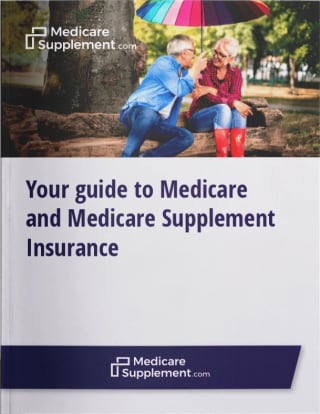Original Medicare (Part A and Part B) is administered by the federal government and is a health insurance program for people 65 years and older as well as individuals with certain disabilities and medical conditions.
Each part of Medicare covers different medical costs. This page outlines the basic benefits of each part of Medicare.

What Does Medicare Part A Pay For?
Medicare Part A (hospital insurance) does not usually require recipients to pay a monthly premium.
Medicare Part A includes coverage for:
Although most people do not pay a premium for Medicare Part A, there can be some required out-of-pocket expenses such as a deductible, coinsurance and copayments.
What Are Medicare Part B Benefits?
Medicare Part B (medical insurance) is optional and usually requires a monthly premium.
Medicare Part B includes coverage for:
Medicare Part B requires an annual deductible, as well as coinsurance and/or copayments you are typically required to pay for covered services.
What Is Covered by Medicare Part C?
Medicare Part C (Medicare Advantage) is not administered by the federal government. Instead, Part C plans are sold by private insurance companies as a replacement for Original Medicare benefits.
By law, Medicare Advantage plans must provide at least the same benefits as Original Medicare. Sometimes, Medicare Advantage plans will include prescription drug coverage, vision, dental and wellness programs, depending on which plan you choose.
Some Part C plans may offer coverage for things like non-emergency medical transportation, caregiver support services and home modifications related to aging in place.
Medicare Advantage allows you to bundle your Medicare coverage into one plan.
Medicare Advantage plan premiums, deductibles, coinsurance and copayments vary by plan. Some Medicare Advantage plans feature $0 monthly premiums.
What Does Medicare Part D Cover?
Medicare Part D prescription drug plans are sold through private insurance companies to help cover the costs of prescription medications.
These plans work alongside your Original Medicare coverage. Part D plan premiums, deductibles, coinsurance and copayments may vary by plan. Some Part D plans feature $0 deductibles.
If you think Medicare Part D is right for you, it is important to enroll in a plan when you are first eligible so that you do not have to pay a late enrollment penalty.
If you are enrolled in a Medicare Part C plan that includes prescription drug coverage, you are not eligible to enroll in a Medicare Part D plan.
If you do enroll in a Medicare Part D plan while you have Medicare Advantage, you will likely be disenrolled from Medicare Part C and automatically enrolled in Original Medicare
You can be enrolled in Original Medicare, a Medicare Part D plan and a Medicare Supplement Insurance (Medigap) plan at the same time.
You can compare Part D plans available where you live and enroll in a Medicare prescription drug plan online when you visit MyRxPlans.com.
What Are Medicare Supplement Plans and What Do They Cover?
If you are enrolled in Original Medicare, you may be eligible for a Medicare Supplement Insurance plan.
Also known as Medigap, Medicare Supplement Insurance helps cover some of the out-of-pocket costs of Medicare Part A and Part B, such as deductibles, copayments and coinsurance.
Medigap plans are sold by private insurance companies. There are 10 different standardized Medigap plans that are available in most states. Each type of plan offers a different combination of benefits.
You can reference the chart below to compare 2023 Medicare Supplement plans.



